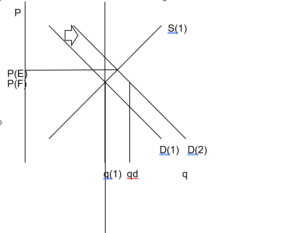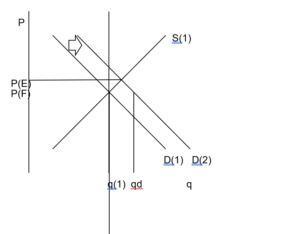A decline of late-night taxis due to a host of issues, such as high barriers to entry and low wages for taxi drivers, has garnered the attention of the citizens of South Korea. In response to this shrinkage, the transport minister of South Korea has put forth his list of solutions to increase the supply of late-night taxis. This article clearly shows the concept of scarcity. Scarcity is present as the demand for taxis at night is high, but supply is limited. Furthermore, the price mechanism cannot manage and allocate resources efficiently as fares are regulated. This article specifically talks of the transport minister’s plan for government intervention to decrease the scarcity of late-night taxis.
After the Covid-19 pandemic, South Korea suffers from a late-night taxi shortage. Throughout the pandemic, the majority of people remained inside their homes. South Koreans started to do everything at home, including work and shopping. This meant less demand for taxis, and due to a government-mandated 10 pm curfew for all businesses, this meant even less demand for late-night taxis. The lack of outside contact meant a steep decline in transportation for personal travel and a steep increase in demand for delivery services. These two jobs have high occupational mobility because they require similar skills and have few barriers or costs involved in switching between them. This prompted a change of occupation for a lot of late-night taxi drivers.
SINCE RECOVERY – SHORTAGES
- Demand has recovered
- Supply still low
- Usually, prices would rise if there is excess demand
- Fares are regulated, so they cannot rise
- SHORTAGE
In an effort to directly ease the scarcity of late-night taxis, the government has started considering removing regulations in the taxi industry.
Figure 1: Late-night taxi shortage
In this diagram, the problem of stagnant fares at P(F) is identified despite an outward shift in demand from D1 to D2. The price of late-night taxi fares is not increased to the price equilibrium due to the price ceiling. This creates market disequilibrium, and since qd > qs, this creates a shortage.
As a result of excess demand, taxi drivers have leverage over potential passengers, and they can discriminate certain taxi rides for what fits them best, which can marginalize certain groups. To resolve and eliminate the consequence of shortages, the government has discussed ideas to keep potential passengers’ “destinations hidden from drivers.” as “taxi drivers pick and choose their customers, preferring to give rides to those who travel long distances since charges are added depending on the distance and time covered.”. The scarcity of late-night taxis creates a power imbalance between taxi drivers and riders, as riders have a small pool of taxi drivers, but taxi drivers have a big pool of riders from which they can choose. Thus, taxi drivers can discriminate against riders.
Figure 2: Solution 1 (Price increase)
In this diagram, a new equilibrium point is found after an outward shift in the demand curve. To account for this, the price is corrected from P1 to P2. As the law of demand commands, an increase in demand leads to an increase in price.
While prices remain low, the quantity provided will, too, as there is less incentive to give the good or service as the cost of the factors of production eats away the profit, and there may be other alternatives that are more worthwhile producing, such as taxi driver to delivery driver, the occupational mobility required for this change of job is very low. In this case, the taxi fares could be more satisfactory; thus, the number of taxi drivers has dropped to other jobs. To incentivize late-night taxi drivers, incentives and an “Increase in the basic cab fare and surcharges for taxis operating late at night” have all been mentioned.
Figure 3: Solution 2 (Supply increase)
There are also two equilibrium points in this diagram; however, the price stays the same. This is possible because supply shifts to the same amount as the demand curve.
Car-and-ride-sharing services as last resort offers, such as carpools, also increase the number of taxis as they do the work of two or more taxis simultaneously but less efficiently. Ideas for legalizing illegal call taxis, such as Uber, have been discussed. The reason for this is that if there’s demand that is not met, this is also the result of shortages. When demand is unmet, people will attempt to satisfy their needs and wants despite the means. Legalizing these illegal taxis will make them more easily safe and traceable as they are no longer prohibited; they can register and license their cars with their respective authorities to operate and have a reason to follow the taxi protocol of their region. This not only cancels some of the negative consumption externalities, such as the discrimination of taxi riders, but also increases the quantity of late-night taxi drivers. However, a hurdle that needs to be crossed is legislation, as taxi firms like Uber were banned due to conflicts between local governments, such as the labor party rallying against Uber to protect domestic taxi drivers. The government will have to approach such issues like this with care.
James Cho





 Posted in
Posted in 

